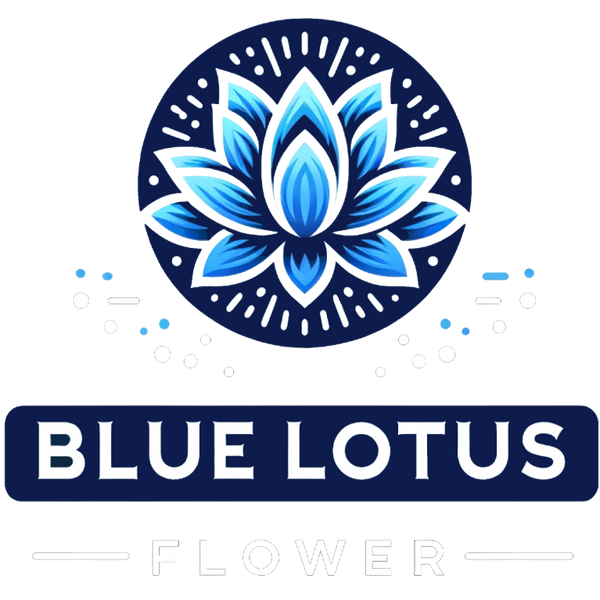The blue lotus flower has been used for its calming properties in traditional practices. blue lotus, scientifically known as Nymphaea caerulea, has captivated human interest for centuries, particularly in ancient Egyptian culture where it was revered as a sacred flower. Known for its stunning blue petals and psychoactive properties, the blue lotus offers a range of medicinal and recreational benefits. In this article, we will delve into the various aspects of the blue lotus, including its usage, effects, potential risks, preparation methods, and counseling insights for users. This comprehensive exploration will provide a thorough understanding of this fascinating water lily and its role in contemporary wellness practices.
What is Blue Lotus and How is it Used?
Understanding the Blue Lotus Flower (Nymphaea Caerulea)
The blue lotus flower, or Nymphaea caerulea, is a striking aquatic plant native to the Nile River and other parts of East Africa. Often referred to as the Egyptian lotus or sacred blue lily, this flower has a rich history steeped in traditional medicine and spirituality. The ancient Egyptians valued the blue lotus not only for its beauty but also for its psychoactive properties, which were believed to induce euphoria and enhance spiritual experiences. Containing various alkaloids, including apomorphine and nuciferine, the blue lotus has been utilized as an aphrodisiac, a sleep aid, and a remedy for various ailments. The dried flower can be consumed in different forms, allowing users to explore its benefits in versatile ways.
How to Use Blue Lotus: Methods and Forms
The Role of Blue Lotus Extract in Consumption
Blue lotus extract plays a significant role in the consumption of this flower, as it is often more potent than simply using the dried flower. The extract is derived from the blue lotus flower and is rich in psychoactive compounds that can enhance the euphoric effects sought by users. Many blue lotus products available on the market are formulated to maximize the benefits of these compounds, often highlighting their flavonoid content. Users can find blue lotus extract in various forms, including tinctures, capsules, and concentrated liquids, which can be seamlessly integrated into their daily routines. This extract allows individuals to experience the full spectrum of blue lotus’s medicinal properties, such as its antioxidant activity and potential to promote lucid dreaming.
What Are the Psychoactive Effects of Blue Lotus?
Exploring the Psychoactive Properties of Blue Lotus
The psychoactive effects of blue lotus are particularly intriguing, as they tap into the natural interplay of neurotransmitters within the brain. One of the primary ways blue lotus induces euphoria is through its interaction with dopamine receptors, which may also help to reduce anxiety levels. The presence of alkaloids like apomorphine and nuciferine not only affects dopamine but also engages the serotonin receptors, contributing to enhanced mood and relaxation. Users often report feelings of calmness, well-being, and a heightened sense of awareness, making the blue lotus flower an appealing choice for those seeking a natural means to achieve a euphoric state.
How Blue Lotus Induces Euphoria and Lucid Dreaming
Many users of Blue Lotus have highlighted its ability to induce lucid dreaming, a phenomenon where individuals are aware they are dreaming and can potentially control their dream narratives. This effect is attributed to the unique combination of psychoactive compounds present in the flower, known as the blue Egyptian lotus. As the blue lotus enhances dopamine levels, it may facilitate a state of heightened consciousness that extends into sleep, allowing for vivid dream experiences. Additionally, the flower’s calming properties can help mitigate insomnia, making it a popular option for those looking to improve their sleep quality while also tapping into their subconscious creativity through lucid dreaming.
The Alkaloids Involved: Apomorphine and Nuciferine
The psychoactive properties of blue lotus primarily stem from its alkaloids, especially apomorphine and nuciferine. Apomorphine acts as a dopamine receptor agonist, meaning it stimulates dopamine receptors in the brain, which can lead to feelings of pleasure and euphoria. Meanwhile, nuciferine has been linked to calming effects and may also contribute to the flower’s aphrodisiac qualities. The interplay between these alkaloids creates a unique psychoactive profile, making the blue lotus flower, known as the blue Egyptian lotus, a compelling subject of study for both recreational and medicinal use. Understanding these components is crucial for users who wish to explore the full range of benefits that Blue Lotus offers, including anxiety relief.
What Are the Health Risks Associated with Blue Lotus?
Potential Side Effects of Consuming Blue Lotus
While the benefits of blue lotus are well-documented, it is essential to acknowledge the potential health risks associated with consuming this flower. Some individuals may experience side effects, which can include dizziness, nausea, and allergic reactions, particularly if they are sensitive to the compounds within the flower. Additionally, the psychoactive effects may not be suitable for everyone, especially those with underlying mental health conditions. Therefore, it is important for users to approach blue lotus with caution, especially when trying it for the first time, and to consult with a healthcare professional if they have any concerns about potential effects such as hallucinations.
Health Risks of Smoking Blue Lotus
Smoking blue lotus is another method of consumption that some users explore, but it is not without its risks. The process of smoking can expose users to harmful chemicals that may arise from combustion, potentially leading to respiratory issues or other health complications. Moreover, the psychoactive effects may be intensified through smoking, which can lead to unpredictable experiences. Users should consider alternative methods, such as brewing blue lotus tea or using extracts, to minimize these risks while still enjoying the flower’s benefits.
Understanding the Risks of Vaping Blue Lotus
Vaping blue lotus has gained popularity as a perceived safer alternative to smoking. However, this method still carries risks that users should be aware of. The inhalation of vaporized substances can potentially irritate the lungs, and the long-term effects of vaping blue lotus specifically are still largely unknown. Additionally, the quality of vaping products can vary significantly, leading to potential exposure to harmful additives. As with any psychoactive substance, exercising caution and choosing high-quality products is essential for ensuring safety when vaping blue lotus.
How to Prepare and Enjoy Blue Lotus Tea?
Making Blue Lotus Flower Tea: A Step-by-Step Guide
Preparing blue lotus flower tea is a delightful and straightforward process, allowing users to enjoy the flower's benefits in a calming beverage. To make blue lotus tea, start with dried blue lotus flowers, which can be purchased from various herbal shops or online retailers. Begin by boiling water, then add one to two teaspoons of the dried flowers into a teapot or infuser. Pour the hot water over the flowers and let them steep for approximately 10 to 15 minutes. For added flavor, users may choose to incorporate honey or lemon. Once steeped, strain the flowers and enjoy the soothing effects of blue lotus tea, which is known for its relaxing properties and potential to promote lucid dreaming.
Benefits of Drinking Blue Lotus Tea
Drinking blue lotus tea offers a plethora of benefits that extend beyond its psychoactive effects. The tea is rich in antioxidants, which contribute to overall health by combating oxidative stress in the body. Users may also experience improved mood and relaxation, making it an ideal option for those seeking a natural remedy for stress or insomnia. Additionally, the tea can serve as an aphrodisiac, enhancing intimacy and connection between partners. Overall, the benefits of blue lotus tea make it a valuable addition to a holistic health regimen.
Comparing Blue Lotus Tea with Other Consumption Methods
When comparing blue lotus tea to other consumption methods, such as extracts or smoking, the tea stands out as a gentle and enjoyable way to experience the flower’s effects. Unlike extracts, which may be more potent and concentrated, blue lotus tea provides a moderate dose of the flower’s psychoactive properties, making it suitable for first-time users. Additionally, the act of drinking tea can be a calming ritual in itself, enhancing the overall experience. In contrast, smoking or vaping may lead to more intense and unpredictable effects, including potential hallucinations, which may not be ideal for everyone. Therefore, for those looking to explore blue lotus, tea is often the preferred method for its balance of enjoyment and therapeutic benefits.
What counseling insights are available to Blue Lotus users?
Blue Lotus Counseling: Addressing Usage and Risks
As the popularity of blue lotus continues to grow, so does the need for counseling insights regarding its usage and associated risks, particularly concerning anxiety relief. Mental health professionals can provide valuable guidance to individuals seeking to integrate blue lotus into their wellness practices. Counseling can help users understand the potential effects of the flower, address any concerns about its psychoactive properties, and develop strategies for safe consumption. Moreover, discussing personal motivations for using blue lotus can help individuals make informed choices that align with their health goals.
Integrating Blue Lotus into a Holistic Health Approach
For individuals interested in holistic health, integrating blue lotus into their routine can be a beneficial addition. Counselors can assist clients in exploring how blue lotus complements other holistic practices, such as meditation, yoga, or herbal remedies. By fostering a comprehensive approach to wellness, users can better understand how blue lotus enhances their overall health and well-being. This integration can also provide a supportive framework for users to navigate their experiences and manage any potential risks associated with blue lotus consumption.
Guidance for Safe Consumption of Blue Lotus
Finally, guidance for safe consumption of blue lotus is paramount for users looking to enjoy its benefits without adverse effects. Counselors and health professionals can emphasize the importance of starting with small doses, particularly for first-time users, to assess individual tolerance and sensitivity. Educating users about the various forms of blue lotus, also known as blue Egyptian lotus, and their respective potencies can help them make informed choices. By fostering awareness and understanding of blue lotus, individuals can enjoy its many benefits while minimizing potential health risks.
What is blue lotus and where does it originate?
The blue lotus (nymphaea caerulea), also known as the blue Egyptian lotus blue water lily, is a water lily native to the Nile River and other parts of Egypt. This medicinal plant has been cherished since ancient times, particularly by the ancient Egyptians, who revered it for its beauty and psychoactive properties. The blue lotus flower has striking blue petals and often symbolizes rebirth and purity in various cultures.
What are the psychoactive effects of blue lotus?
The blue lotus is known for its psychoactive effects, which can include feelings of euphoria and relaxation. This is primarily due to the presence of alkaloids such as apomorphine and nuciferine. These compounds interact with the brain's dopamine receptor pathways, potentially leading to enhanced mood and sensory perception, which may also include hallucination effects in some users. However, effects can vary widely among users, and some may report anecdotal evidence of enhanced mood.
How can I use blue lotus?
There are several ways to use blue lotus, including brewing it as a tea, smoking, or vaping the dried flower. Blue lotus flower tea is one of the most common methods, where the dried petals are steeped in hot water to extract their beneficial properties. For those looking for a more concentrated form, blue lotus flower extract is available, which can be added to various beverages or consumed on its own.
What are the benefits of blue lotus?
The benefits of blue lotus are numerous and varied. It is commonly cited for its potential to act as a sleep aid, helping to alleviate insomnia and promote restful sleep. Additionally, it may possess antioxidant activity, which can contribute to overall health. Some users report experiencing lucid dreaming when consuming blue lotus, possibly due to its calming effects. The flower is also considered an aphrodisiac, enhancing sexual desire and pleasure.

